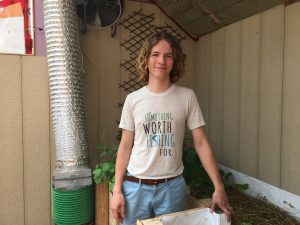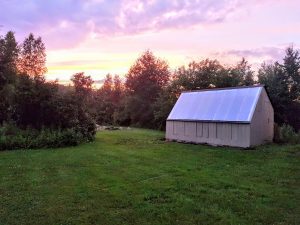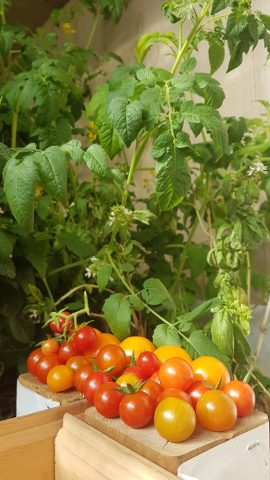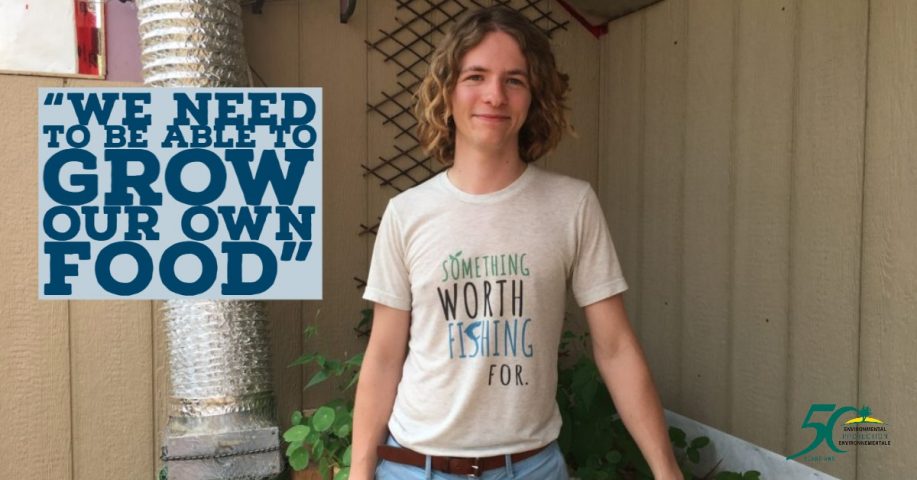New Brunswick PhD student’s ‘climate battery’ greenhouse grows fresh produce year-round

The food we eat has a substantial impact on the environment, therefore sustainable food production is a fundamental aspect of addressing climate change. Eating locally grown food is a great way to support climate-smart agriculture, and to mitigate the environmentally-destructive impacts of large-scale food production.
For many New Brunswickers, eating locally through the winter doesn’t seem like an option. With harsh weather and unforgiving cold snaps, most crops wouldn’t stand a chance surviving outside.
But some people in the province are choosing to redefine how they grow their food. Andrew Mathis, a PhD student at the University of New Brunswick, wanted to take things to the next level when it comes to food security and self-sufficiency.
It all started when Mathis’ friend Jake Wildman-Sisk started working with an organization that was interested in growing food year-round. In 2014, Wildman-Sisk approached him about aquaponics – growing fish and plants together in a managed ecosystem – and the two decided to start a company called Oasis Farmery.
While Oasis Farmery was initially focused on aquaponics, things soon evolved into the question, “how can we do this year-round?”
The pair raised around $12,000 to build an experimental greenhouse that could be used to grow food through all four-seasons. The experimental greenhouse was built on Mathis’ property, and was featured in our 2019 EcoBuildings tour!

“The idea of Oasis Farmery was to reconnect people with food… Some people only connect with food when they eat it, and then there’s the additional level of cooking your own food, and then there’s the additional level of growing your own food,” Mathis told the Conservation Council.
The greenhouse uses passive solar and geothermal heating and cooling techniques to maintain temperatures warm enough to grow food all year long. It features glazing that is angled to the winter solstice sun, to capture the most heat during the coldest season. The glazing is polycarbonate, which is highly durable and helps insulate the greenhouse.
Mathis is currently growing tomatoes, spinach, and even a lime tree as an experiment to see if he can produce fruit over the next few years. He is also working on inoculating lion’s mane mushrooms, as they could benefit from the humidity in the greenhouse.

After beginning to construct the initial experimental greenhouse, Mathis was approached by The Ville Cooperative, who was interested in adding a four-season greenhouse to their property. He helped them design and maintain the greenhouse that they successfully use today.
“Last winter, The Ville’s greenhouse did really well… it only dipped below zero once, which was really cool,” Mathis said.
Since then, he has also provided the greenhouse design to a school outside Miramichi, as well as to Oromocto First Nation.
Considering the current cost and building process of the design, Mathis said it is tailored more toward a community garden rather than something an individual household would have in their yard.
For now, he is working on getting the cost down, to eventually have a design where everybody could have a greenhouse in their yard to grow food.
“Food security is important in New Brunswick because we don’t have access to local food year-round, and that’s really important – we need to be able to grow our own food.”
The impacts of climate change – including intense or unpredictable weather events – may cause trouble for traditional farming methods. The unpredictability of weather patterns could pose a threat to outdoor crops, potentially leaving farmers at a loss.
Durable greenhouses that can maintain consistent temperatures for crops year-round could be part of the solution for how we address food security and climate change in New Brunswick.

